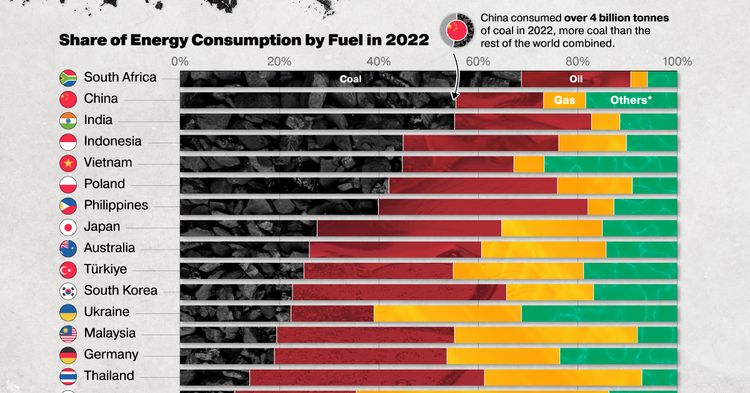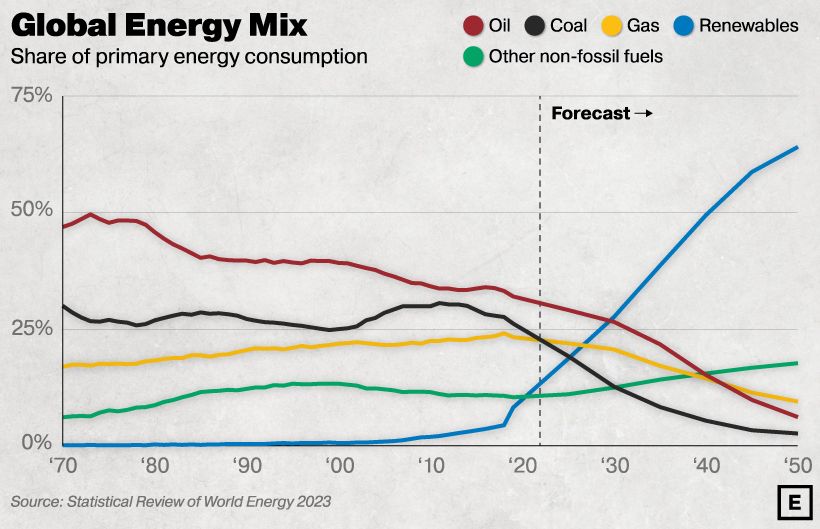Which Countries Are Most Reliant on Coal?

Countries Relying On Coal
The world has been placing significant emphasis on decarbonizing the energy system as we move towards achieving net zero.

Nevertheless, in spite of attempts to decrease carbon emissions, fossil fuels continue to make up over 80% of worldwide primary energy consumption—while coal, the most cost-effective energy source available, also stands as the predominant contributor to CO2 emissions related to energy production.
The image shown above utilizes information extracted from the Statistical Review of World Energy to illustrate the extent to which certain nations rely on fossil fuels, with a particular emphasis on coal.
The Significance Of Coal In Developing Nations
Coal plays a pivotal role in discussions regarding climate and energy, as it serves as the leading source for electricity production and the primary fuel for the manufacturing of iron, steel, and cement.
Fossil fuels remain a cost-effective and plentiful energy option, especially in developing nations where there is a growing need for more energy.
South Africa tops the list as the nation most reliant on coal, as stated in the statistical review. Coal makes up a significant 69% of its primary energy consumption in the year 2022.
Percentages might not sum up to a total of 100 because of the rounding process. Choose the presented countries above.
In the year 2022, the world witnessed a significant milestone as the total global utilization of coal soared above 8 billion metric tonnes in a single year. The leading contributors to this remarkable consumption were none other than China and India, who stood out as the top consumers in sheer quantity.
The power industry in China alone is responsible for consuming a significant portion of the world's coal. At the same time, India has experienced a 6% annual increase in its coal consumption and has effectively doubled it since 2007. Moreover, it is predicted that India will continue to dominate the coal consumption growth in the foreseeable future.
Developed Nations' Need For Coal
Coal usage in the United States has experienced a significant decline of nearly 50% when compared to the initial years of the 2010s.
With programs such as the Inflation Reduction Act (IRA), which allocates around $370 billion to expedite the shift towards renewable energy sources in the United States, the use of coal is predicted to continue declining.
This information regarding the BP Energy Outlook 2023 is derived from BP's prediction for achieving global net-zero emissions by the year 2050.
A similar trend can be observed within the European Union.
Take France, for instance, with only a mere 2.5% of its total primary energy consumption derived from coal. This proportion is a mere fraction of what it used to be in the early 2000s, exactly half to be precise.
In Germany, which is the largest economy in Europe, coal still makes up 18.9% of the total energy consumed (experiencing a slight increase compared to 2021, thanks to the energy crisis). Nonetheless, a decade ago, specifically in 2012, the percentage of primary energy derived from coal was even higher, sitting at 24.9%.
As developed countries witness a decline in the use of coal, the International Energy Agency predicts that the demand for this fossil fuel will stabilize from 2022 to 2025. However, in emerging economies, coal consumption continues to remain consistent. Subsequently, starting from 2025, the demand for coal is expected to gradually decrease.



